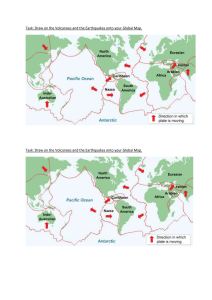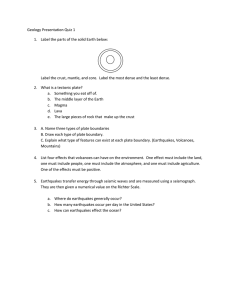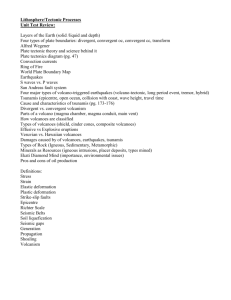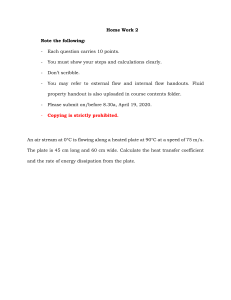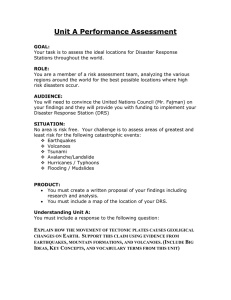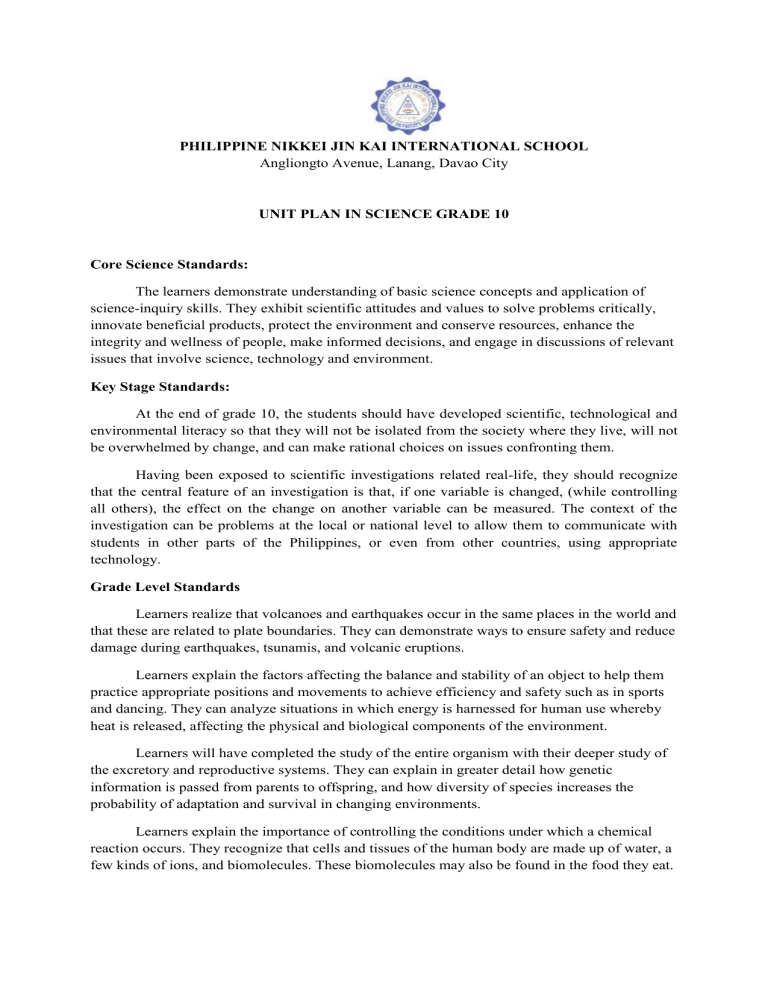
PHILIPPINE NIKKEI JIN KAI INTERNATIONAL SCHOOL Angliongto Avenue, Lanang, Davao City UNIT PLAN IN SCIENCE GRADE 10 Core Science Standards: The learners demonstrate understanding of basic science concepts and application of science-inquiry skills. They exhibit scientific attitudes and values to solve problems critically, innovate beneficial products, protect the environment and conserve resources, enhance the integrity and wellness of people, make informed decisions, and engage in discussions of relevant issues that involve science, technology and environment. Key Stage Standards: At the end of grade 10, the students should have developed scientific, technological and environmental literacy so that they will not be isolated from the society where they live, will not be overwhelmed by change, and can make rational choices on issues confronting them. Having been exposed to scientific investigations related real-life, they should recognize that the central feature of an investigation is that, if one variable is changed, (while controlling all others), the effect on the change on another variable can be measured. The context of the investigation can be problems at the local or national level to allow them to communicate with students in other parts of the Philippines, or even from other countries, using appropriate technology. Grade Level Standards Learners realize that volcanoes and earthquakes occur in the same places in the world and that these are related to plate boundaries. They can demonstrate ways to ensure safety and reduce damage during earthquakes, tsunamis, and volcanic eruptions. Learners explain the factors affecting the balance and stability of an object to help them practice appropriate positions and movements to achieve efficiency and safety such as in sports and dancing. They can analyze situations in which energy is harnessed for human use whereby heat is released, affecting the physical and biological components of the environment. Learners will have completed the study of the entire organism with their deeper study of the excretory and reproductive systems. They can explain in greater detail how genetic information is passed from parents to offspring, and how diversity of species increases the probability of adaptation and survival in changing environments. Learners explain the importance of controlling the conditions under which a chemical reaction occurs. They recognize that cells and tissues of the human body are made up of water, a few kinds of ions, and biomolecules. These biomolecules may also be found in the food they eat. Unit Title: EARTH AND SPACE Grade & Section: Grade 10 Heiwa, Jiyuu, Seigi and Shinri Teacher: Ms. Janiera B. Ahaddin First Quarter Topics: Unit Plan 1 Time Frame: 20 Days/Session 100 minutes/session I- Plate Tectonics STAGE I- DESIRED RESULTS Established Goal Content Standards The learners demonstrates understanding of … Transfer Goal Students will be able to independently use their learning to exhibit disaster preparedness and help others become more prepared for possible calamities. 1. the relationship among the Meaning locations of volcanoes, Enduring Understanding (EU) Essential Questions (EQ) earthquake epicenters, and mountain ranges Students will understand that: Students will keep considering the following questions: Performance Standards The learners shall be able to: 1. Everything on Earth has greatly changed since millions of years ago and is continuously changing. 1. Demonstrate ways to ensure 2. We should be aware of the disaster preparedness during vulnerabilities of the area where earthquakes, tsunamis, and we are situated, know the signs of volcanic eruptions an impending disaster, and heed public warnings. 2. Suggest ways by which he/she can contribute to government 3. Natural disasters are bound to efforts in reducing damage due to happen. We can only prepare earthquakes, tsunamis, and ourselves to lessen loses of life volcanic eruptions and properties. In times of these disasters, our safety is our major responsibility; we cannot depend solely on others. 1. How was Earth then compared to now? 2. How can we minimize the damages brought about by natural disasters? 3. Why is disaster preparedness everyone’s responsibility? 4. How do we appreciate abundance in a world with limited resources? 4. Appreciation of the abundance of resources requires recognition of their limitations. Acquisition Knowledge Skills Students Will Know: Students will be skilled at: 1. Internal Structure of the Earth 1. Describing the internal structure of the Earth 2. Distribution of active volcanoes, earthquake epicenters, and major mountain ranges 3. Plate boundaries 2. Describing the distribution of active volcanoes, earthquake epicenters, and major mountain belts 4. Processes and landforms along plate boundaries 5. Mechanisms of plate movement 6. Pieces of evidences that support plate movement 3. Describing the different types of plate boundaries 4. Explaining the different processes that occur along plate boundaries 5. Describing the possible causes of plate movements 6. Enumerating the lines of evidence that support plate movement 7. Explaining how volcanoes, mountain ranges, and earthquakes result from plate interactions 8. Recognizing various uses of water resources and their associated problems 9. Enumerating solutions that help reduce human impact on aquatic environments K to 12 COMPETENCIES 1. Explain the presence of active volcanoes, earthquake epicenters, and mountain ranges along plate boundaries S9ES –Ia-j36 STAGE II- EVIDENCE OF LEARNING Assessment Evidence Performance Task Engaging Scenario: In 2013, a total of 1,193 earthquakes with a magnitude ranging from 5-9.9 were recorded in the world history. The quake in Bohol which occurred last October 15 ranked 2nd place in terms of death toll. Some analysis states that one factor that contributes to the number of fatalities during natural calamities is the lack of knowledge on disaster preparedness among Filipinos. To address this concern, your school will be holding a one-day art festival to demonstrate understanding of plate tectonics at the same time, ensure disaster preparedness during earthquakes, tsunamis and volcanic eruptions. Product: A visual presentation (photos essay, paintings, etc.) film depicting the impacts of geologic events in a province or country of your choice. RUBRIC: DESCRIPTION CRITERIA 4 (Excellent) Concept Displays a clear picture of what the students are trying to achieve. It is centered on a concept that shows highly developed awareness and preparedness during geological events. Content Creativity and Delivery TOTAL: __/60 3 (Satisfactory) SCORE 2 (Fair)) 1 (Needs Improvement) Has a fairly clear picture of what the students are trying to achieve. It is closely related to the concept and shows highly developed awareness and preparedness during geological events. Has brainstormed their concept, but no clear focus has emerged. Goals/ final product not clearly defined. Little effort has been spent on brainstorming and refining a concept. Unclear on the goals and how the project objective will be met. X5 The content includes a clear statement of purpose or theme. A rich variety of supporting information contributes to the understanding of the project’s main idea. Information is presented as a connected theme with accurate, current supporting information that contributes to understanding the project’s main idea. Content lacks a central theme, clear point of view and logical sequence of information. Much of the supporting information is irrelevant to the overall message. X5 Creativity and original content enhance the purpose of the output in an innovative way. Audiences other than the presenter’s peers would learn something from the output and find it valuable. Creative elements are included. They neither distract the audience from the content or purpose nor enhance the purpose of the output. The intended audience can understand the output. The content does not present a clearly stated theme, is vague, and some of the supporting information does not seem to fit the main idea or appears as a disconnected series of scenes with no unifying main idea. Creativity is lacking and does not enhance the content and/or the purpose of the output. Creative elements may distract the audience from the content or purpose. The output reaches the intended audience, but is not educational. No creative elements are included; or the types of elements used are common and inappropriate. They distract the audience from the content and/or purpose of the output. The project does not reach the intended audience. X5 UNIT PLANS TABLE OF CONTENTS QUARTER I- EARTH AND SPACE Unit Plan 1 Plate Tectonics QUARTER II- FORCE, MOTION, AND ENERGY Unit Plan 2 Electromagnetic Spectrum, Light, Electricity and Magnetism QUARTER III- LIVING THINGS AND THEIR ENVIRONMENT Unit Plan 3 Structures and Functions of Reproductive, Endocrine, and Nervous Systems, Heredity: Inheritance and Variation, Evolution, Population Dynamics and Environmental Change QUARTER IV- MATTER Unit Plan 4 Gas Laws, Biomolecules, Chemical Reactions
